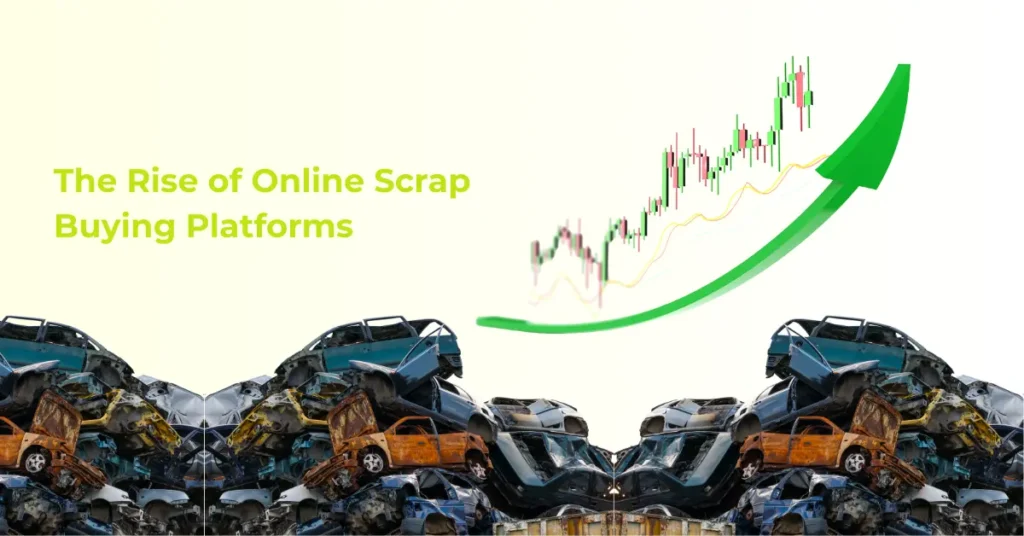When we talk about industrial growth and urban development, metals and minerals play a crucial role. From the steel in our buildings to the copper in our wires, they’re everywhere. But as industries expand, so does metal waste and managing it wisely has become one of the biggest environmental challenges of our time. Let’s break down what ferrous and non-ferrous metals are, how their waste affects our planet, and what we can do to make the future a little cleaner.

What Are Ferrous and Non-Ferrous Metals?
The simplest way to understand the difference lies in one element: IRON.
Ferrous metals contain iron. This includes steel, cast iron, and wrought iron. Because of the iron content, they’re magnetic and prone to rust when exposed to moisture. You’ll find them in construction beams, automobile parts, pipelines, and heavy machinery.
Non-ferrous metals, on the other hand, do not contain iron. Examples include aluminum, copper, zinc, lead, tin, and brass. They don’t rust, are lighter in weight, and have high conductivity, which makes them perfect for electrical wiring, aircraft manufacturing, and packaging materials. Here’s a simple example:
- The steel frame of a building – ferrous.
- The aluminum window frames – non-ferrous.
- The copper wires running inside – non-ferrous.
Each plays a unique role, but when discarded improperly, both can cause serious harm to the environment.
How Ferrous & Non-Ferrous Metal Waste Affects the Environment?
Metal waste doesn’t just sit quietly in a landfill. It reacts, leaks, and contaminates.
- Soil and Water Contamination: Metals like lead, mercury, and cadmium from non-ferrous waste can seep into the soil and groundwater. Over time, these toxins enter the food chain, affecting plants, animals, and eventually, humans.
Real example: In some mining regions of Jharkhand and Odisha, improper disposal of metal-rich waste has led to soil infertility and water pollution affecting nearby villages.
- Air Pollution: During metal smelting or recycling, harmful gases like sulfur dioxide and carbon monoxide are released. If the process isn’t managed properly, it adds to air pollution and greenhouse gas emissions.
- Visual and Land Degradation: Open dumps filled with rusting vehicles, machinery, and scrap metals ruin landscapes and make large portions of land unusable for years.
- Resource Depletion: When metals aren’t recycled efficiently, new mining operations are needed leading to deforestation, soil erosion, and habitat destruction.
How to Segregate Ferrous and Non-Ferrous Metal Waste ?
Segregation is the first and most crucial step toward sustainable metal waste management. Fortunately, it’s not as complicated as it sounds.
- Magnetic Test: Since ferrous metals contain iron, they’re magnetic. A simple magnet can instantly separate ferrous from non-ferrous scrap.
- Visual and Weight Check: Non-ferrous metals like aluminum and copper are generally lighter and have a brighter sheen, while ferrous metals are heavier and duller due to rust or oxidation.
- Use of Advanced Sorting Technology: Modern recycling plants use eddy current separators (for non-ferrous) and magnetic drums (for ferrous) to automate segregation. This speeds up processing and increases recovery efficiency.
Real example: Many e-waste recycling facilities in India and Singapore use conveyor-based segregation systems where metals are automatically sorted by sensors and magnets before recycling.
Protecting the Environment: Smarter Waste Management Practices
It’s not just about separating waste. It’s about rethinking how we handle it altogether. Here’s how companies, communities, and individuals can help:
- Encourage Recycling and Reuse: Recycling metal reduces the need for mining, saves energy, and cuts carbon emissions. For example, recycling one ton of steel saves about 1.1 tons of iron ore, 630 kg of coal, and 55 kg of limestone. Similarly, recycling aluminum uses 95% less energy than producing it from raw ore.
- Adopt Circular Economy Principles: Instead of the “take-make-dispose” model, industries should design products keeping recyclability in mind. This ensures metal parts can be reused or reprocessed instead of being dumped. Example: Automakers like Tata Motors and Toyota have started “vehicle dismantling programs” where end-of-life cars are stripped for reusable metal components.
- Responsible Disposal Systems: Local municipalities and industries must set up designated collection centers for metal waste. This ensures it reaches authorized recyclers instead of ending up in open landfills.
- Public Awareness and Training: People often don’t realize the value of the scrap sitting in their garages or old electronics. Awareness programs can teach households how to sort and dispose of metal waste properly.
- Green Innovation: Emerging technologies are helping reduce environmental harm. For instance, bioleaching uses bacteria to extract metals from waste in a less toxic way, and eco-smelting minimizes emissions during recycling.
Why Does This Matter More Than Ever ?
Metal waste isn’t just an industrial issue, it’s a shared responsibility. Every nut, bolt, and wire that gets recycled instead of dumped helps conserve resources, reduce pollution, and protect the ecosystem for future generations.
Next time you see a pile of scrap metal, remember: it’s not trash: it’s potential. With mindful segregation, recycling, and sustainable practices, we can turn what once harmed the planet into something that helps it heal.
Ferrous and non-ferrous metals will always be the backbone of our infrastructure and technology. The challenge is not in using them but in managing their waste responsibly. If industries, governments, and citizens work together, we can strike a balance between progress and preservation.
It’s time we treat metal waste not as a burden, but as a resource waiting to be reborn.

